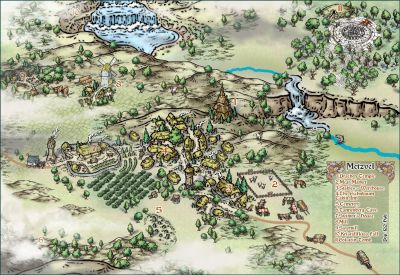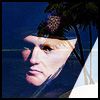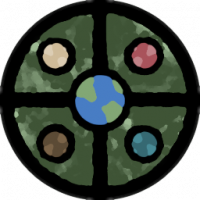
Monsen
Monsen
About
- Username
- Monsen
- Joined
- Visits
- 692
- Last Active
- Roles
- Administrator
- Points
- 8,940
- Birthday
- May 14, 1976
- Location
- Bergen, Norway
- Website
- https://atlas.monsen.cc
- Real Name
- Remy Monsen
- Rank
- Cartographer
- Badges
- 27
-
CHK DATA Error using various forest using new purchase SS-1
You say reinstalled, but did you actually install the update, or reinstalled using the original CC3+ installer? The CC3+ installer will only fix CC3+ itself, so running a repair install using that won't help with SS1 problems, but the updates contain the update files not just for CC3+ itself, but for all the add-ons and stuff too. This is why it is important to install the update after installing any new add-on, even if your version number is already at the latest.
If you already did install the update and it didn't work, you should contact tech support. You'll find the form by logging in to your registered user pages.
-
Cosmographer Questions
1. To get a circle into a path/poly, first :CC2SPLIT: it, then use line to path on it.
2. I don't think there is a template with this grid, this was drawn specifically for that map. If you have the 2018 annual, there is a star charts issue which includes a similar grid in the template, if not this exact one.
Placing circles concentrically can be done a bunch of ways. Either with the center modifier (I don't understand why you find it unreliable, it always works for me for normal entities. I don't know if it correctly handles things like multipolies, and it can't handle symbols correctly which are complex entities made up from several others.), or by using snap and using a common center point, or by just typing in the coordinates for the center of each circle (and make them the same obviously), or even by placing another entity first and use for example endpoint. To make the sizes of the circles increase linearly, either use snaps, or type in the radius manually, increasing it by the desired number for each circle.
Lines can be easily drawn using radial coordinates. Draw them from the center first, then trim them to the inner circle. You can also use array copy to distribute them around a circle, or even Symbols along.
The numbers are just text with a rotation matching the angle of the line + 90, with a low center as text justifciation, and placed using the endpoint modifer.
It might not be a simple one-click solution, but with all the precision tools in CC3+, drawing grids like this is one of the things it excels at.
-
FastCad: Menu File not found
Do her user have access to the location you installed the program to? (i.e. can she browse to that location using windows explorer, there should be a few png files in there, can she view those in an image viewer?)
Assuming she can, on the CC3+ command prompt, try typing
menudm @fcw32.mnuand hit enter. This should load the default menu file, and CC3+ does remember this between sessions, so if this works, it shouldn't have to be done again. -
New Mouse
That's a known problem with Logitech mice. They use crappy switches. I actually use Logitech myself because of a range of other advantages, like the great power play charging system, no other manufacturer have anything else coming close. But I also end up replacing the thing regularly because of the crappy switches, experiencing the exact same things you describe, even in the more expensive models.
But most other makers have their issues too. The one I had before my logitech streak was a Razer, and it actually came with replacement switches, but of course, not for the switch that actually did wear out, my wheel button. And the one before that came with a battery that started to grow out of it's compartment. All good mice as far as operating them and functionality goes, they just don't last.
-
World of Myirandios - Mivlis-Gyaflaggio region (400 x 400 km)
I have tried it at exportsetmppp at 80000000000, plus smaller and higher numbers
That's way to high. You shouldn't go higher than 40000000. You can easily calculate that number yourself. Take that 6000x6000 that you manage to export, multiply that up, and you have 36000000. That's your practical limit for how much large a map export you can do in a single pass. If you set the ppp value higher than you can handle, you'll end up making your max possible single pass size your absolute max as well, because CC3+ won't be allowed to go for more than one pass.
-
Map Construction
Templates have different advantages and disadvantages. Generally, all maps with particularily "fancy" elements have constrained dimensions because the new map wizard doesn't have the facilities to just scale the map area (technically, CC3+ doesn't have a separate understanding of the intended mapping area and outside elements like this, everything is just "the map"). So for these kinds of maps, free scaling is impossible. You can always edit the mapping area after creating the map though. Everything is still just regular entites, you can manipulate it as you wish, you just have to do some manual work, since it won't be 100% ready straight out of the new map wizard.
-
Map Construction
Note that the SS3 Pro template require proportional scaling. This is set up this way due to the legend at the right, it would look weird indeed if it was scaled arbitrarily. So the new drawing wizard enforces a 5:4 ratio on that template. So 17 by 11 is not a valid size for this particular template.
You'll notice how the width and height change in relation to each other if you just exit that particular input field instead of directly clicking the next button. Change one, and once you exit the field, you'll see the other update to the appropriate value for the constrained ratio.
-
Scaling when Import new Bitmap
Notice that if a fill is NOT scaled, your map is likely to not look as good when exporting to an image as it looks in CC3+, because the fills doesn't have a fixed scale, so they won't be the same size in the export as in the on-screen view (Typically, they will be smaller and thus tile more).
Also, if you don't set it as scaled, it won't stay the same size as you zoom in/out of the map while working either.
-
Fighting with TRACED
-
Trace not selecting entity











